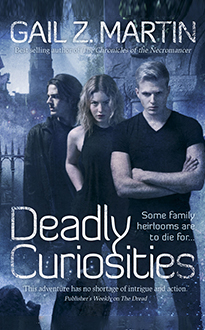https://uparoundthecorner.blogspot.com/
One thing on every writer’s mind as they are planning and writing a short story is word count. In almost every instance the shorter the work, the easier it is to find a market for it. It’s a balance of words, quality, and the story to be told.
In any case, there are more markets that accept 5000 word short stories than 7500 word stories, and some prefer word counts under 4000. Even those that indicate they will consider a 7500 word piece state it has to be really exceptional to be published. Consider in context what is being said, since I believe all publishers sift their submission pile for what they believe are exceptional stories. The longer the story, the higher the hurdle for it to reach publication.
Now consider writing a fantasy story. The writer has to introduce the reader to the created world, demonstrating or explaining ‘how it works differently’ as compared to the reader’s mundane, everyday world. The world building has to be packed within the context of the story while keeping the plot moving forward. Give the readers just enough to make sense, enabling them to understand. Allow the readers to fill in some of the blanks where ever possible.
An example to illustrate: A writer doesn’t need to explain to readers how an insecticide bug spray works (and its limitations) on a cockroach menace. The average reader can see the property owner in his mind’s eye removing the cap, pointing the can and pressing down on the nozzle, while avoiding inhalation of toxin. But a writer of fantasy may have to explain how a net stung with iron beads might be used by the royal gardener to snare the flitting fairies that have been stealing the blooming royal snapdragons.
In both examples the character is trying to get rid of pests, but the former dealing with the cockroach infestation would require fewer words than the latter dealing with the fairy menace. Maybe it would only require thirty words spread over a few sentences, but that adds up quickly when considering a word count limit of 5000. Why include the episode about the iron affecting magical creatures? Maybe it’s a way of establishing the rules or laws of that world for when a larger, more dangerous magical foe comes into conflict with the protagonist—so that the full explanation isn’t necessary, possibly right in the middle of intense action.
Maybe that’s part of what interests readers of fantasy—the discovery of new worlds and creatures, and how they interact. But there’s more than just how the fantasy world differs from the reader’s everyday experience. The story also has to include characters the readers want to follow through their interactions and adventures. Creating characters and relaying the story’s action takes words too—if at all possible everything tucked nicely into the 5000 word (or less) box.
So that’s the challenge. Write a short story with all the necessary elements, while including content related to the fantasy setting that is both necessary and intriguing. And keep the word count under the limit.












